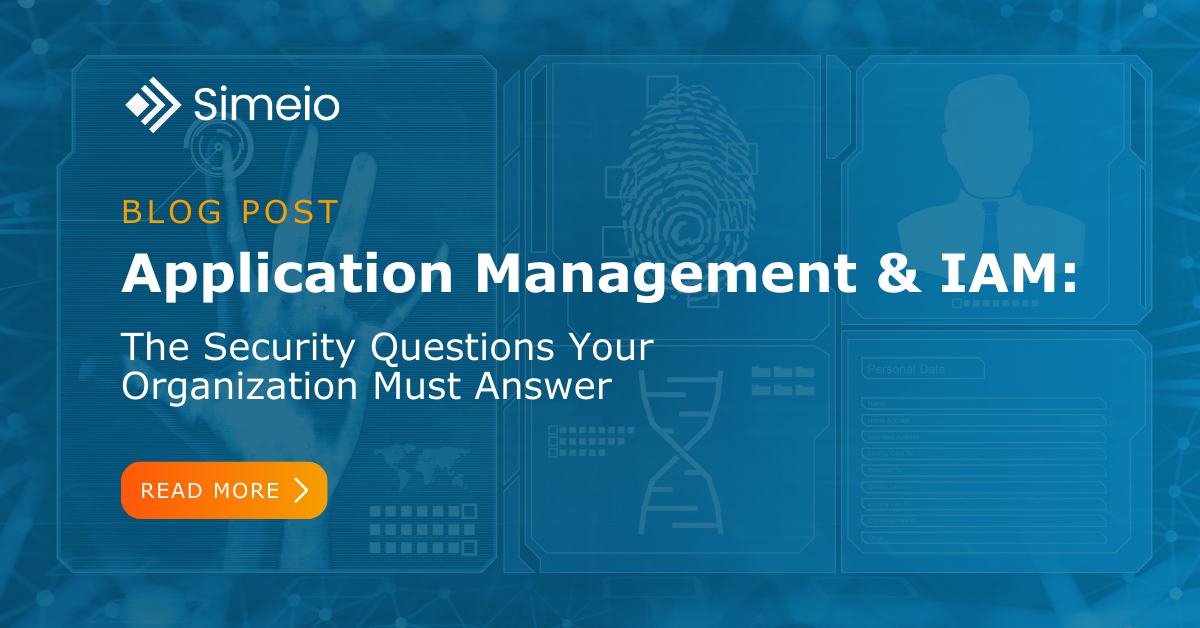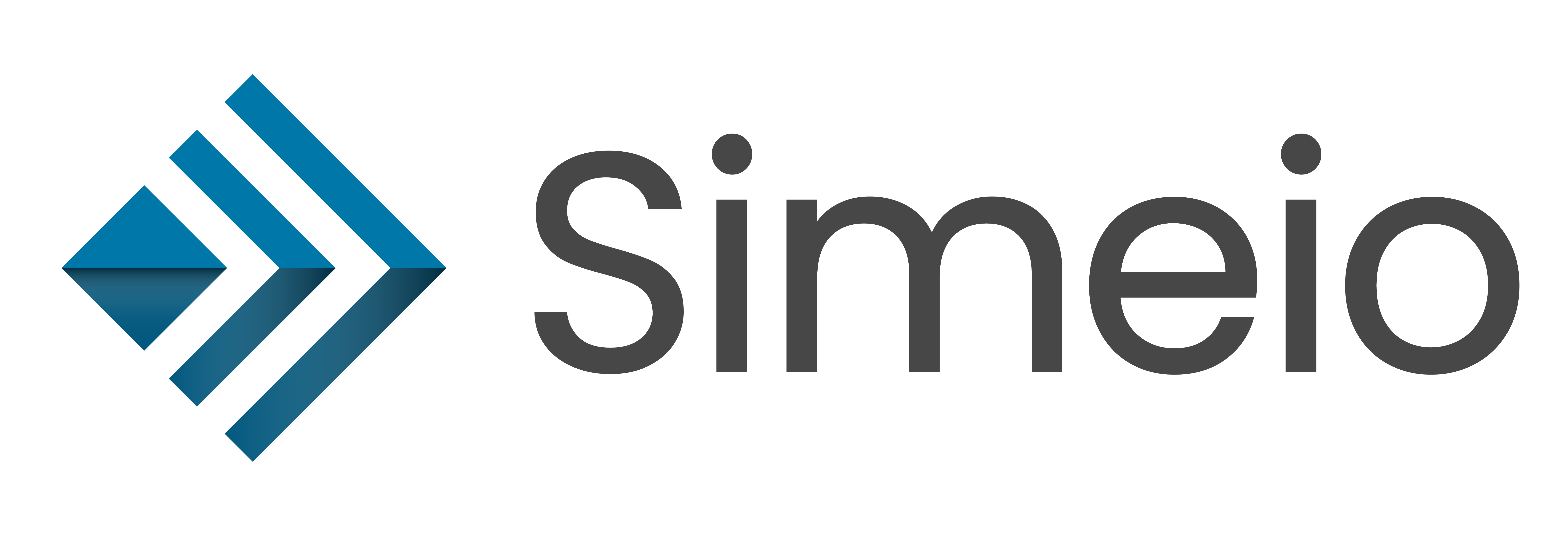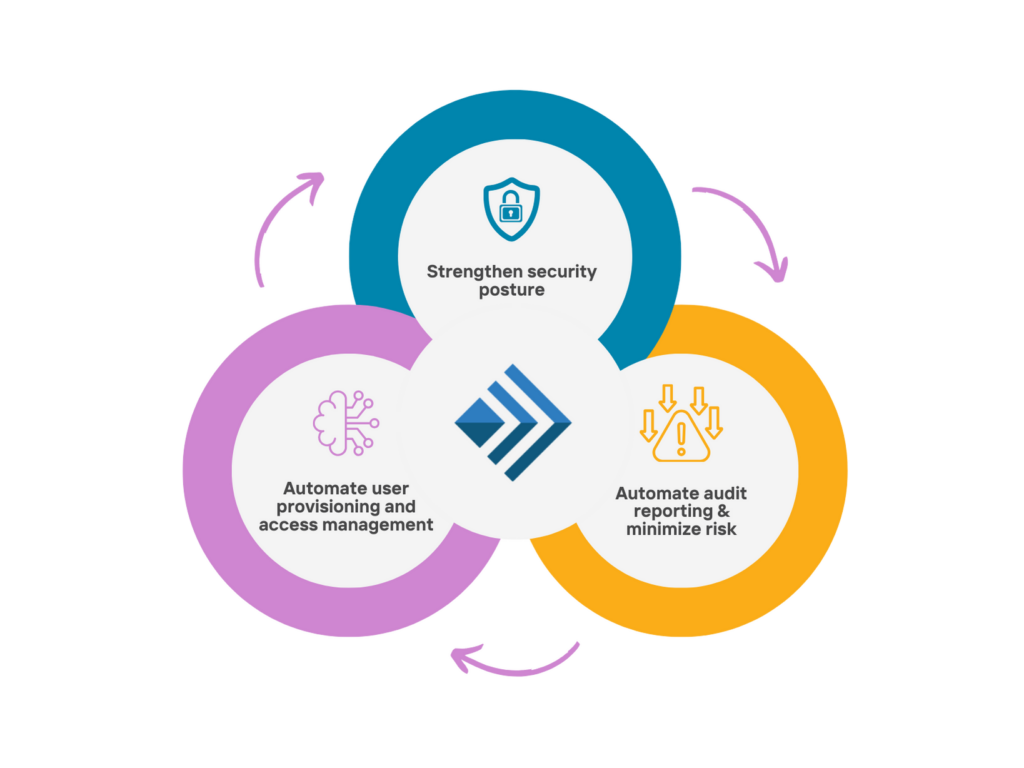
Are You Overlooking Identity Security in Your Application Management Strategy?
Application management is no longer just an IT operations challenge—it’s a security imperative. Organizations today rely on hundreds, if not thousands, of applications, spanning cloud, on-premises, and hybrid environments. Yet, many enterprises struggle to track and secure these applications, leaving identity security gaps that increase risk and compliance exposure.
A lack of application visibility creates three major challenges:
- Security Gaps – Applications without identity controls (SSO, MFA, provisioning) are vulnerable to unauthorized access.
- Compliance Risks – Regulatory frameworks like SOX, HIPAA, GDPR, and PCI DSS require identity security enforcement, but without a full inventory, proving compliance is nearly impossible.
- Operational Inefficiencies – IAM and security teams spend countless hours manually tracking applications, integrating identity controls, and ensuring governance.
To solve these challenges, organizations need to shift from reactive identity security to a proactive, structured approach to application management. That starts by asking the right questions.
Key IAM Security Questions for Your Organization
To effectively manage identity security within your application portfolio, security and IAM teams must work closely with application stakeholders and relevant business units to answer these critical questions:
1. Do We Have a Centralized, Continuously Updated Application Inventory?
Without a complete list of all applications running in your environment, identity security enforcement is guesswork.
- Where are application records stored today? (CMDB, spreadsheets, IAM tools, or nowhere?)
- Are all applications accounted for, including shadow IT and third-party tools?
- Do we have an automated way to discover and track new applications?
- Does our existing IAM infrastructure, including our tech stack, effectively address security gaps, and is there a unified identity platform to manage hybrid environments effectively?
Why It Matters:
A disconnected or outdated application inventory leads to unknown security risks and inconsistent governance across applications. Without a centralized system, it’s impossible to determine if your current IAM tech stack adequately addresses modern security challenges or manage identities seamlessly across diverse environments.
2. Who Owns Each Application and Is Responsible for Its Security?
Application security can’t be enforced if there’s no clear ownership.
- Who is the application owner responsible for security and access governance?
- Is there a process for application owners to regularly review and update security settings?
- How do we engage business units in IAM-related security decisions?
Why It Matters:
Unassigned or orphaned applications introduce security blind spots—with unmonitored access and misconfigured security controls.
3. Are Identity Security Controls Consistently Applied Across All Applications?
Each application should have standardized identity security controls in place, aligned with enterprise policies.
- Do all applications enforce Multi-Factor Authentication (MFA) for access?
- Is Single Sign-On (SSO) properly configured across all applicable apps?
- Are privileged access management (PAM) controls applied to sensitive applications?
Why It Matters:
If identity security controls aren’t standardized across applications, users may bypass security best practices, increasing the risk of credential theft or unauthorized access.
4. How Are Applications Prioritized Based on Risk?
Not all applications pose the same level of risk—security teams must focus efforts where they matter most.
- Which applications store sensitive or regulated data (financial records, PII, PHI, etc.)?
- Are business-critical applications secured more rigorously than lower-risk ones?
- Is there a formal identity risk assessment process for new and existing applications?
Why It Matters:
By prioritizing application security based on risk, IAM teams can ensure high-impact applications receive the strongest protections first.
5. Can We Easily Prove Compliance for Identity Controls Across Applications?
Identity security isn’t just a best practice—it’s a compliance requirement.
- Do we have a centralized way to track identity security policies across all applications?
- Can we generate compliance reports showing access controls, MFA enforcement, and audit logs?
- Are we ready for regulatory audits without last-minute scrambling?
- Do we have a clear understanding of where sensitive data resides within these applications, and who has access to it?
Why It Matters:
Regulations like SOX, HIPAA, GDPR, and PCI DSS require identity security enforcement. Without clear visibility, organizations face audit failures and potential penalties. Understanding data residency and access is critical for compliance and data protection.
6. Are Applications Onboarded to IAM Systems Efficiently?
Application security should be streamlined, not a bottleneck.
- How long does it take to onboard an application into identity controls?
- Are application owners able to self-service their IAM integration needs?
- Are security policies automatically applied during onboarding?
Why It Matters:
Manual IAM onboarding slows down business innovation—automating the process saves time, reduces risk, and ensures consistency.
The Solution: Automating Application Management with Simeio IO
Answering these IAM security questions shouldn’t require weeks of manual effort. With Simeio IO, organizations gain:
- Continuous Application Discovery – Automatically detect, inventory, and track all applications in real time.
- Centralized Visibility & Risk Prioritization – Understand which applications have security gaps and prioritize fixes.
- Automated Identity Control Enforcement – Apply MFA, SSO, and provisioning policies consistently across all applications.
- Self-Service Application Onboarding – Empower application owners to integrate identity security without burdening IT.
- Audit-Ready Compliance Reporting – Ensure every application meets security and regulatory requirements.
By integrating IAM, security, and application management, Simeio IO transforms identity security from a manual headache into an automated, risk-based strategy.
Take Action: Strengthen Your Application Management Strategy Today
If your security and IAM teams struggle to track, manage, and secure applications, now is the time to take action. Start by asking these six critical IAM security questions.
Then, let Simeio IO help you take control of application security, IAM governance, and compliance—at scale.
Schedule a Demo to see how Simeio IO can transform your identity security posture.

